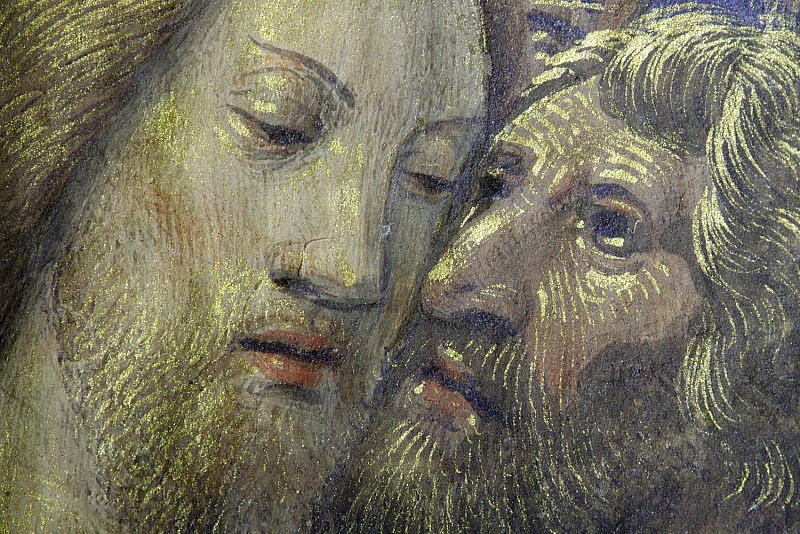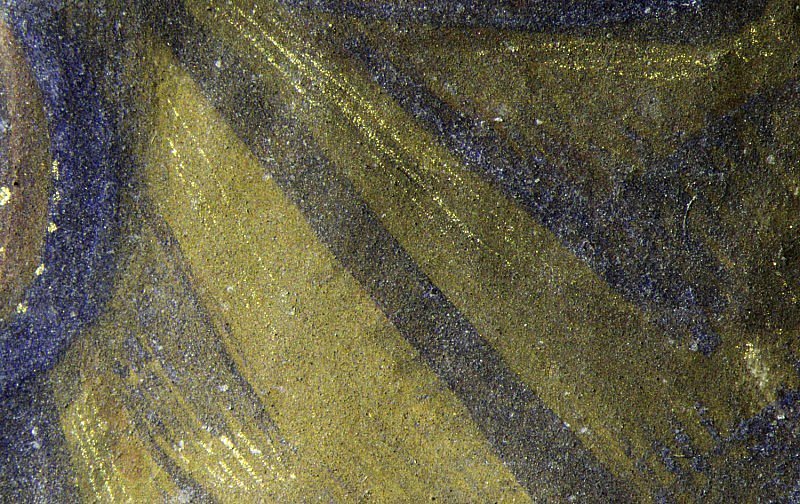Leaves from the Hours of Charles de Martigny
These miniatures are precious survivals from an exquisite Book of Hours. It was illuminated by the royal painter Jean Bourdichon for Charles de Martigny, a powerful bishop and courtier of Charles VIII of France.
Not surprisingly, given his royal connections, Charles de Martigny entrusted the decoration of his Book of Hours to the most favoured court painter. Jean Bourdichon, who illuminated manuscripts for the royal family and painted their portraits, included a life-like image of Charles de Martigny in his Book of Hours.
Learn more about these leaves by exploring the sections below or selecting the images on the right. Discover further details by choosing any of the images with the hotspot symbol ![]() .
.
The manuscript was illuminated by Jean Bourdichon and his workshop assistants.
These leaves belonged to a Book of Hours made c. 1485-1494 for Charles de Martigny, Bishop of Elne (1475-1494). By the 19th century, at least one of them (Marlay cutting Fr. 6) belonged to Samuel Rogers (1763-1855) and was acquired in 1856 by Thomas Miller Whitehead (1825-1897). Subsequently, all three leaves were in the possession of Charles Brinsley Marlay (1831-1912), who bequeathed them to the Fitzwilliam Museum in 1912.
These leaves would have introduced the main liturgical divisions of Charles de Martigny’s Book of Hours. A portrait of the patron is incorporated in the full-page miniature of the Mass of St Gregory. The two other surviving leaves have large miniatures with arched tops and three lines of text written beneath the images. The latter also have full-borders of pink and blue acanthus sprays on gold grounds, incorporating floral motifs, birds, animals and grotesques.
The common palette, identified in all three leaves, includes carbon black, lead white, brown earths and vermilion red. The decorated borders which frame two of the miniatures contain lead-tin yellow, malachite green, organic pinks and azurite blue, with dark blue accents painted with ultramarine. Shell gold was used extensively, and shell silver was employed to paint the clouds in the Mass of St Gregory. The latter miniature also contains some modern pigments, which bear witness to a ‘restoration’ campaign carried out during the 19th century.
The palette used in the three miniatures is not homogeneous. Some of the variations may be due to differences in subject matter and setting, i.e. the sombre tones of an outdoors night scene versus the brighter hues of a lit interior. These colour variations are reflected in the choice of different pigments.


Betrayal and Arrest of Christ (Terce of the Hours of the Virgin)
Set in the Garden of Gethsemane, this miniature shows Christ, Judas, St Peter and other figures depicted half-length against a dark blue sky, with highlights in shell gold. This composition features in numerous manuscripts painted by Bourdichon and his workshop. The main protagonists were most probably painted by Bourdichon himself, while the rest of the image, lacking the master’s subtle modelling, was completed by his assistants.
The arch-topped miniature features a full border of pink and blue acanthus and red, blue and pink floral sprays on a gold ground with birds, a frog, and a monkey mounted on a dragon. Below are three lines of text, opening with a grey and white ornamental initial D, introducing Terce of the Hours of the Virgin. The letter is filled with gold on a pink ground, enclosing sprays of blue, yellow and white pansies. The text of Terce of the Hours of the Virgin continues on the reverse, which is decorated with a one-sided, vertical border in the outer margin, containing pink and blue acanthus and floral sprays on a gold ground with a bird. The page is further ornamented with small foliate initials in contrasting colours, one embellished with a fly, and another with an animal head. Line fillers take the form of white and gold foliate motifs on blue and maroon grounds, and tree branches rendered in brown and gold.